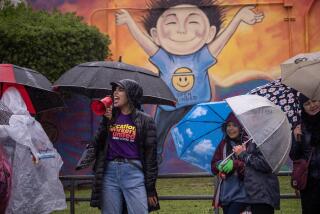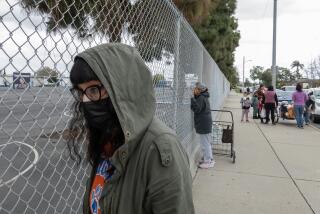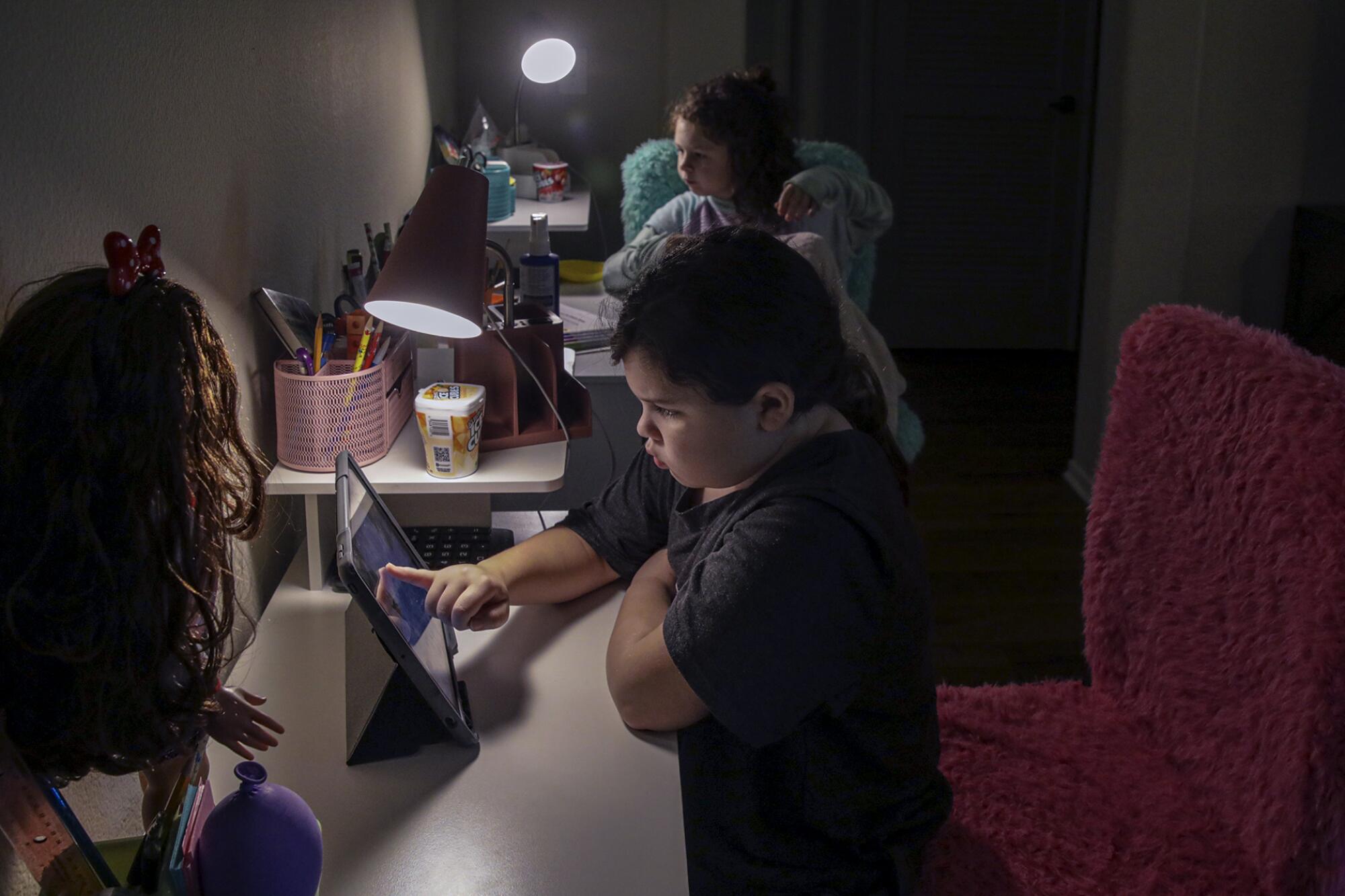
- Share via
A surge of parents seeking remote learning for their children has overwhelmed public school programs in Los Angeles, causing teacher shortages, administrative snafus and enrollment delays that in some cases have kept students out of school for weeks.
The L.A. Unified School District program, called City of Angels, was an already existing independent study program that was adapted this school year to serve parents unable or unwilling to return their children to in-person classes due to ongoing pandemic-related safety concerns. The program has been sought out by many parents who have children with special needs as well as health issues.
For the record:
5:49 p.m. Sept. 27, 2021An earlier version of this story incorrectly stated that a bill addressing some of the independent study problems was still on the governor’s desk. The governor signed the bill on Sept. 23.
But a large number of the 15,000 students enrolled have experienced a range of problems as the district grapples with teaching vacancies and cumbersome state guidelines that have created difficulties for school districts across California.
While thousands of parents have successfully enrolled their children, others appear to have struggled with the process, with many who seek help unable to get responses from phone calls and emails. Many children have missed days of instruction and, in the most extreme cases, have been unable to attend school for weeks. And many have faced repeated disruptions as newly hired teachers tried to figure out the system or as substitute teachers were replaced, one after another.
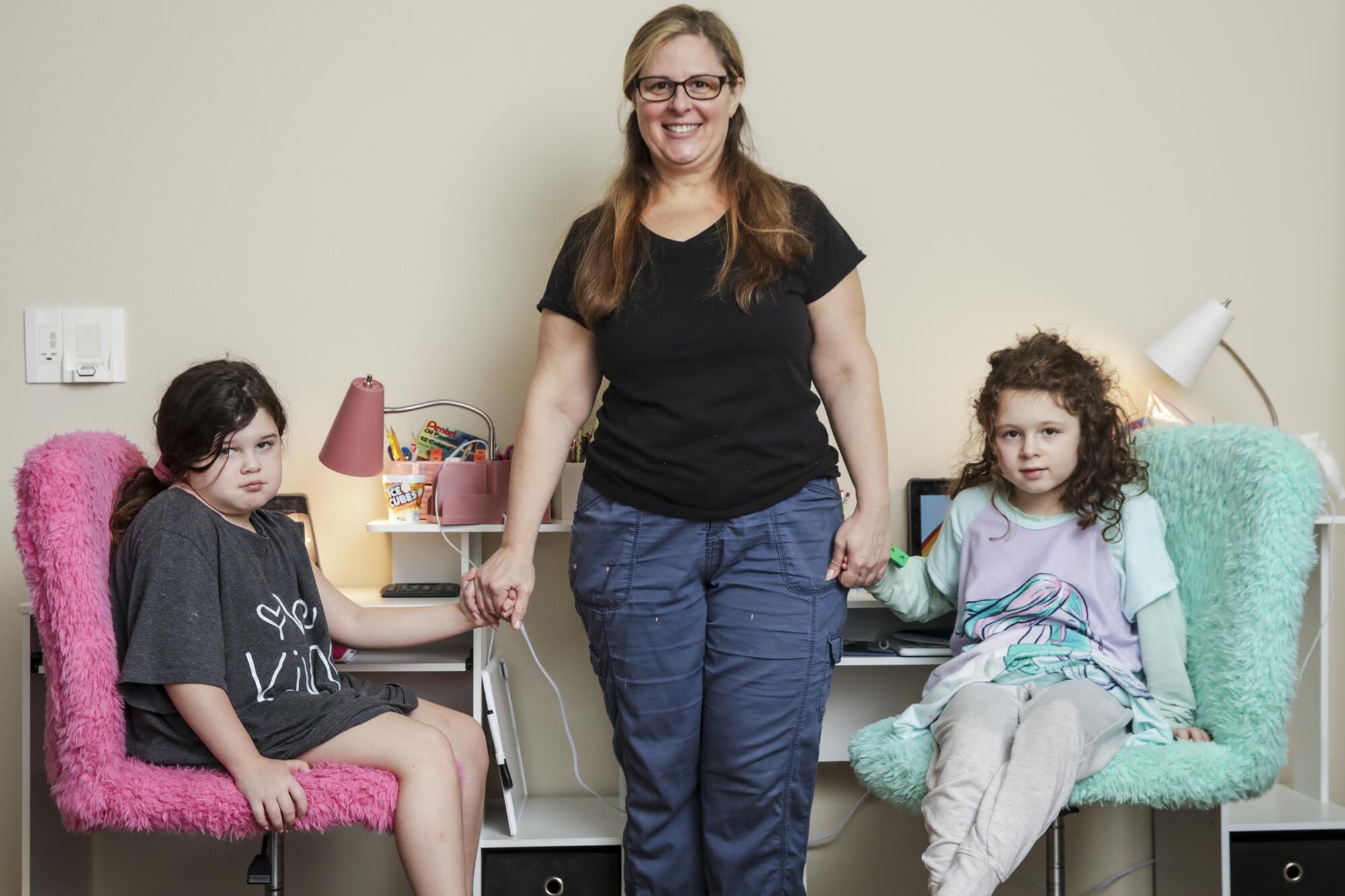
Alison Goldberg said her twin daughters, Madelynn and Savannah, were left without a teacher for nearly two weeks. One month into the school year, her daughters had been reassigned teachers three times. The last one was a substitute.
Going back to school during a pandemic, Goldberg said, was never an option: One daughter has a metabolic disorder and her doctor recommended that she stay home because she is vulnerable.
“It’s just a nightmare,” Goldberg said. “Kids like mine are not getting a fair public education.”
Teachers have also reported problems. One, who requested anonymity for fear of retaliation, said she had received ever-shifting instructions and no guidance from administrators by phone or email. Her curricular materials arrived several weeks into the semester.
L.A. Unified is far from the only school district that has faced difficulties with independent study programs. Many problems stem from efforts by state officials to make sure that school systems would restore in-person learning this fall.
With the expectation that the vast majority of students would return in person — and they have — the Legislature narrowed the alternatives. State officials required school districts to provide remote learning through independent study, making it the only authorized option to regular in-person instruction.
In past years, independent study programs have catered to students with unique schedules or unusual needs — like child actors. And these students did academic work without frequent teacher supervision — often using packets they’d turn in to a teacher once per week.
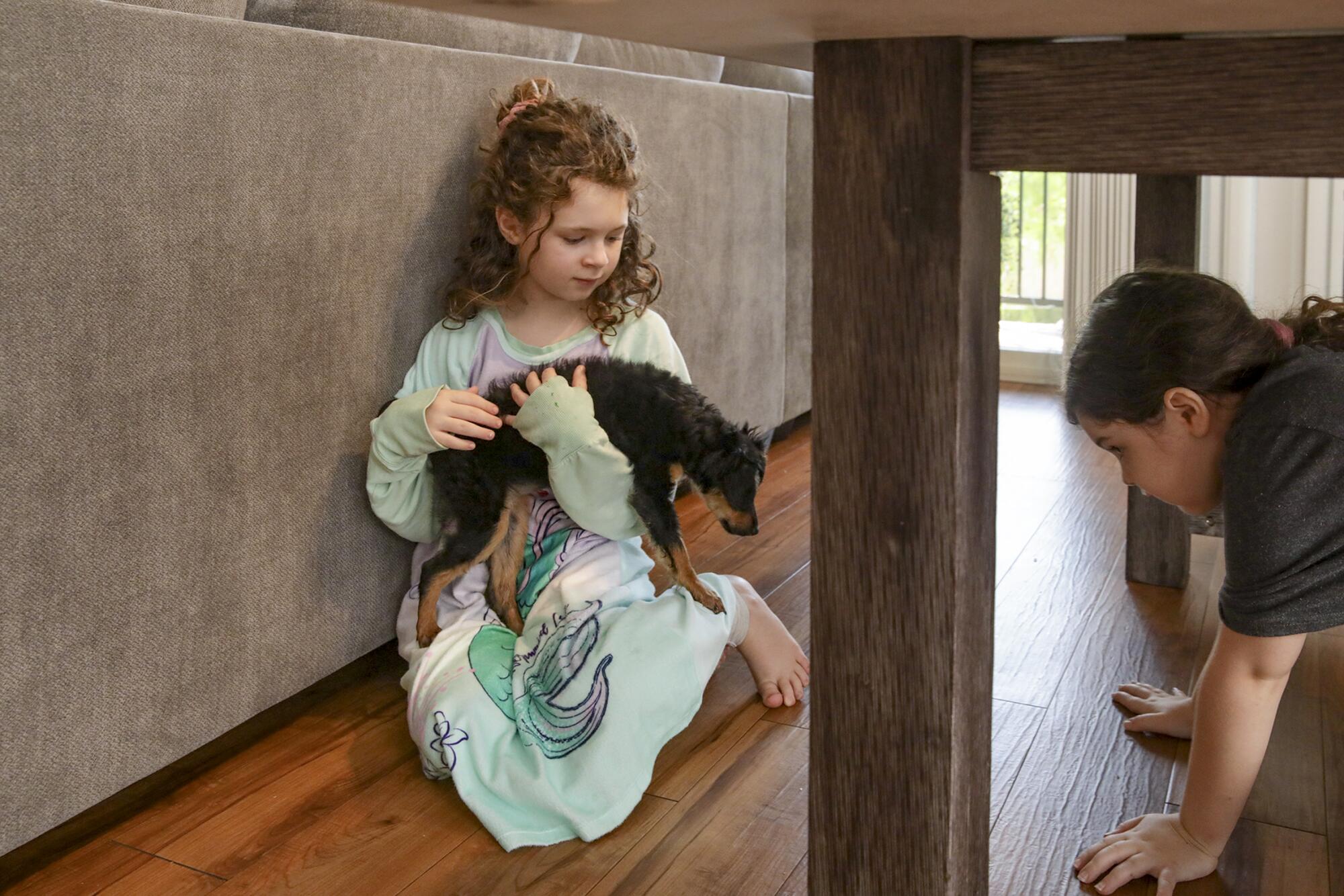
State officials decided that an expanded version of independent study — one that now includes some live daily online interaction with a teacher — would suffice for families wanting remote learning. But this live online instruction, in quantity and scope, is nothing like last year, when school districts carried out their entire academic program online.
In L.A. Unified, with about 450,000 students, only about 3% have requested the remote option, but the program had to be wrestled into existence almost overnight — a task magnified when parents flooded the district with last-minute requests.
Exactly how many families faced serious difficulties is unclear. A senior union official told members on Thursday that only 2,000 children were fully enrolled at the start of school on Aug. 16 — a time when more than 10,000 students had requested enrollment. District officials said Friday that the “vast majority” were “assigned a teacher” by that date.
Many of these teachers have been temporary. The district acknowledged Friday that about 37% of positions have been filled by substitute teachers, who, under state work rules, must be transferred to different students after no more than 30 days, district officials said.
At last week’s Board of Education meeting, board member Scott Schmerelson called the situation “an emergency” and urged senior administrators to transfer in as much staff as necessary.
The situation appears to have been particularly dire for children with special needs. Student disability attorney Valerie Vanaman said her firm could not handle all the requests for help and estimated that at least hundreds of students with special needs were not receiving appropriate instruction well into the school year.
When Myra Ruiz made inquiries about enrollment, she got bounced around between City of Angels and in-person schools. Her situation is especially challenging because her 11-year-old twins and 10-year-old have disabilities that require special services.
“It has been really an impossible situation,” Ruiz said.
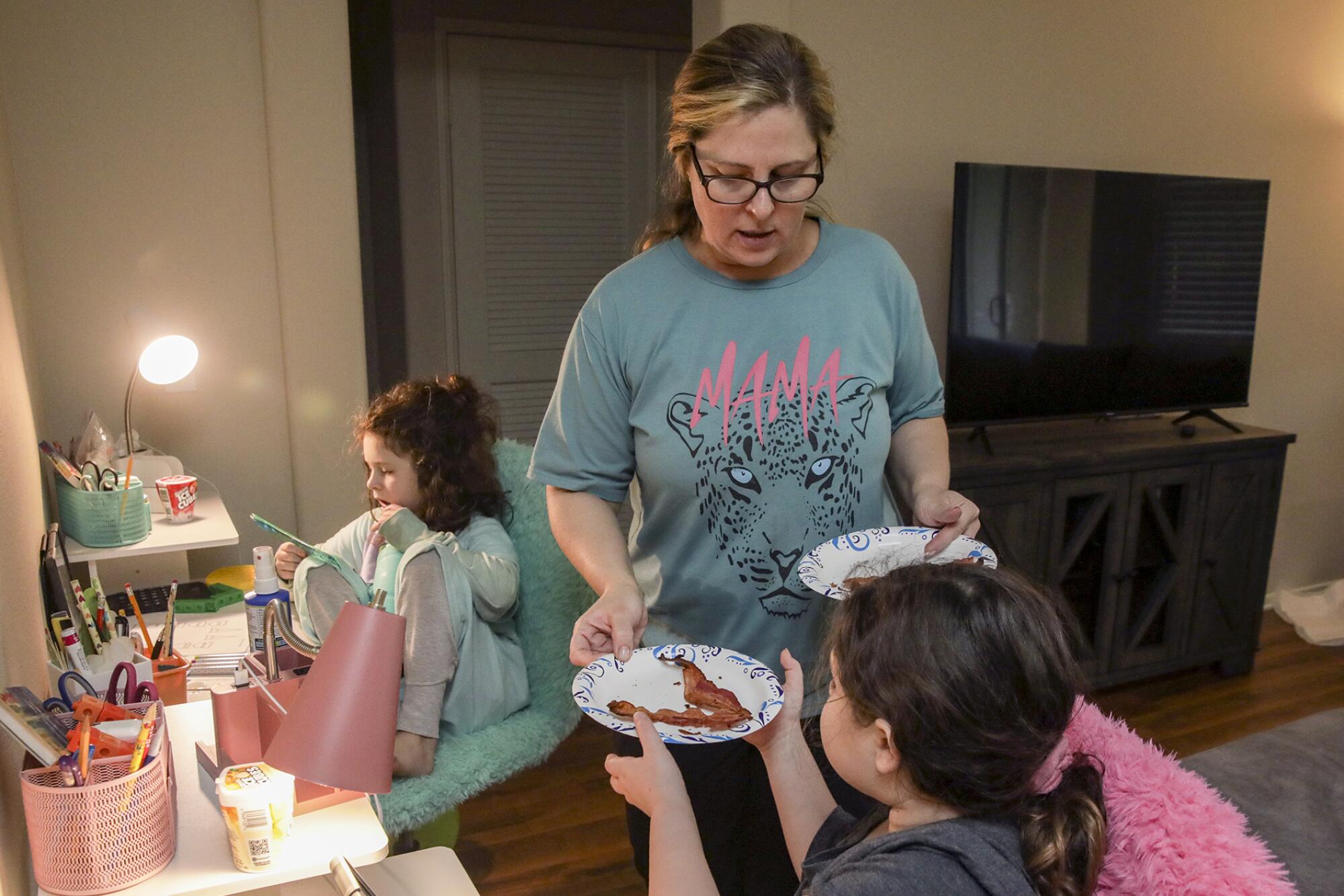
For such students, the path toward City of Angels has been complicated. These students typically are set up with a legally required Individualized Education Plan, or IEP. But the IEPs have to be updated before enrollment and the meetings have been difficult to schedule.
Moreover, parents of students with disabilities assumed that their children would have ready access online or by appointment to the services — speech therapy, for example — that their children would otherwise receive in person through the regular program. That is not necessarily the case.
“Many advocates around the state predicted that independent study wouldn’t be the right fit for remote learning,” said Victor Leung, the director of education equity at the ACLU of Southern California.
With the surge in cases caused by the Delta variant, many families ultimately decided to keep children home.
Across the state, students with disabilities have been discouraged from seeking independent study, services have been delayed and students are losing days of instruction and risk falling behind, a coalition of education rights organizations said in a Sept. 22 letter to state Supt. of Public Instruction Tony Thurmond and state Board of Education President Linda Darling-Hammond.
A bill addressing at least some of the independent study problems was signed by Gov. Gavin Newsom on Sept. 23, making it easier for districts to legally provide services students need, whether through independent study or while students are quarantined.
Advocates remain worried. The legislative fixes don’t fully address challenges parents face when they opt for long-term independent study, the organizations say.
“While we are struggling, as advocates, to support the families and organizations from whom we have received calls, there are surely many other parents/guardians who do not have advocates supporting them,” the letter states. “They are thus even more unlikely to have their education rights acknowledged or protected.”
Another issue is that middle and high school students in the old independent study format were typically assigned only one teacher — who was not expected to be qualified to teach every subject. Families entering independent study this fall were expecting fully credentialed teachers for each subject, just as they were used to.
L.A. Unified Chief of Schools David Baca acknowledged that the parents’ accounts of systemic problems are accurate.
To meet demand, Baca said, staff members have been drafted from other areas to help families enroll. The district has also hired an additional 171 teachers since the start of school — totaling 575 — as well as support staff.
“There is some routing that’s needed, but we are at the place now where we feel like every email that comes in or every phone call, we can route it so we can take care of the follow-up,” Baca said of where things stand nearly seven weeks into the school year.
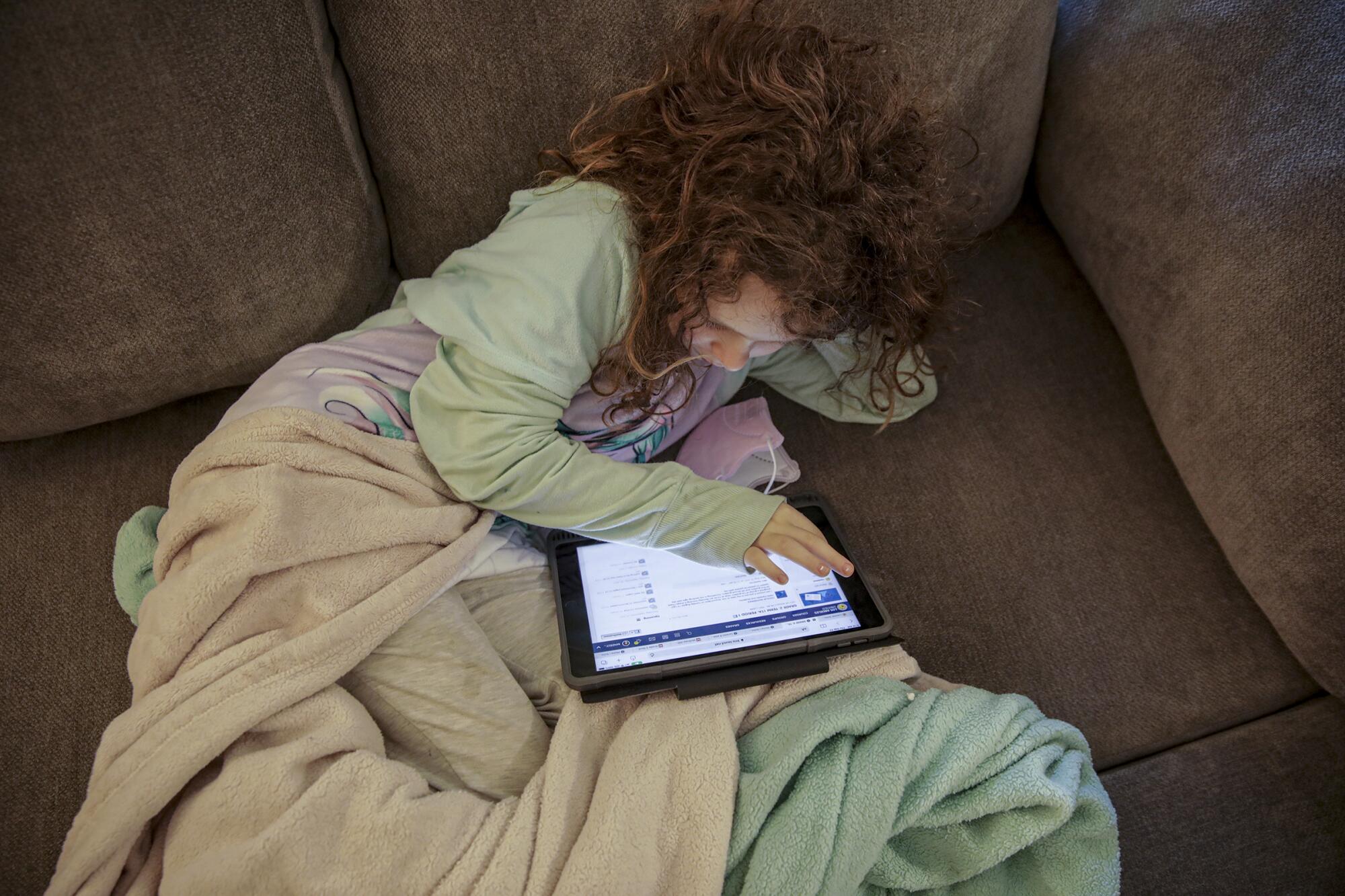
In Ruiz’s case, even bringing on an attorney did not lead to a swift response, although the district responded quickly after being contacted about her case by The Times. As of this week, two of Ruiz’s children are attending classes through City of Angels, while one child is still waiting to be fully enrolled. While happy that the situation has improved, Ruiz said she worries about lost learning time.
For Goldberg, a single parent, the entire experience has been so draining she recently adopted two puppies to help support her daughters emotionally. As far as school goes, her daughters have progressed so little that she’s considering hiring a tutor.
Jocelyn Minton said she’s grateful for the remote option, even if enrolling her 5-year-old was a roller coaster. For eight days, he logged into a virtual classroom filled with other students but no teacher, Minton said. She wasn’t able to reach anyone by phone or email.
“I felt like all of us who chose this safer option had to sacrifice education for health,” Minton said. After about two weeks, she finally got a hold of administrators, including Baca, who helped find a class for her son. Within a few days, he was reading and completing math assignments alongside his virtual classmates.
“I’m grateful that they’re doing it, but with that comes a lot of kinks,” Minton said.
More to Read
Sign up for Essential California
The most important California stories and recommendations in your inbox every morning.
You may occasionally receive promotional content from the Los Angeles Times.

